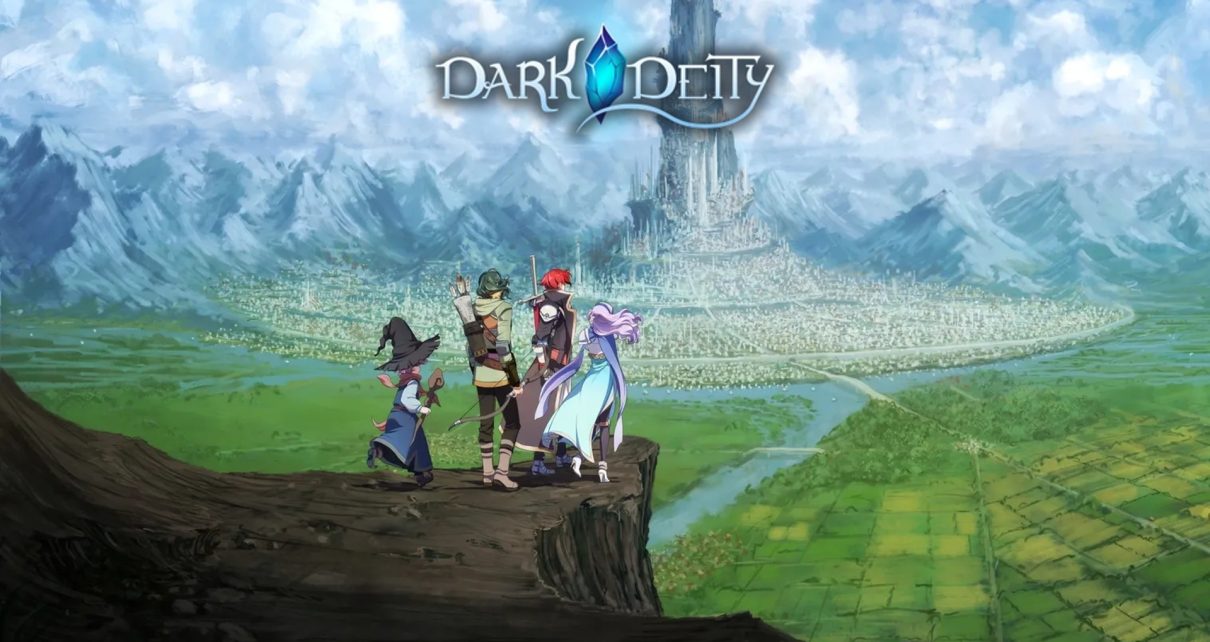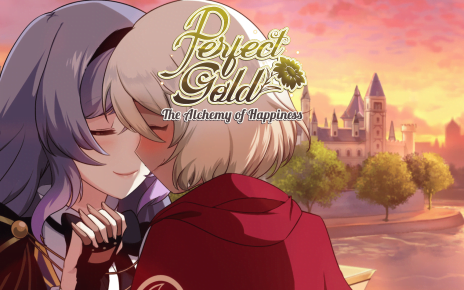It would be no exaggeration to say that Dark Deity, developed by Sword & Axe LLC and released on June 15th, 2021, leans heavily on the Fire Emblem blueprint. In the game’s Kickstarter campaign, Sword and Axe called upon the Nintendo series’ powerful strategy RPG and visual novel hybrid formula in crafting Dark Deity’s own tale of sword and strategy. Does the game live up to its spiritual predecessor’s standard and an impressive ten-month timeline from Kickstarter campaign to release?
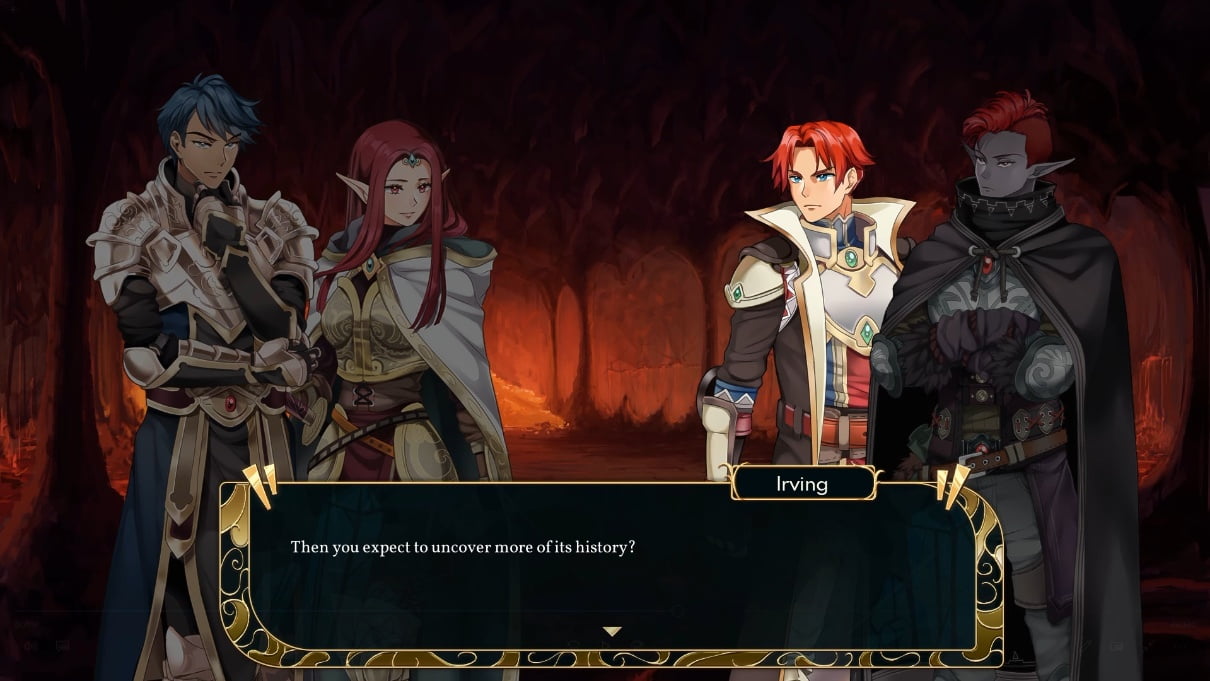
Thrown into the Flames of War with Ambiguous Purpose
The player is tossed into the world of Terrazael through the lens of Irving, a student at the Brookstead Military Academy. Irving and his companions are summoned into a war by King Varic of Delia, a paranoid and mercurial ruler. Irving’s initial small group of companions grows as he journeys and discovers that his country’s war isn’t exactly what it seems.
The game is presented chiefly in Visual Novel ADV format, with anime-style character sprites. Of note, Dark Deity features Bonds, which function similarly to Fire Emblem’s Support conversations, unlocking up to three bonus scenes between each pair. Each character has a whopping ten Bond partners, and unlike Fire Emblem, there is no limit on the number of partners a character can bond with. In a game where character screen time can be preciously short, it’s great that players can explore their favorites further through this feature.
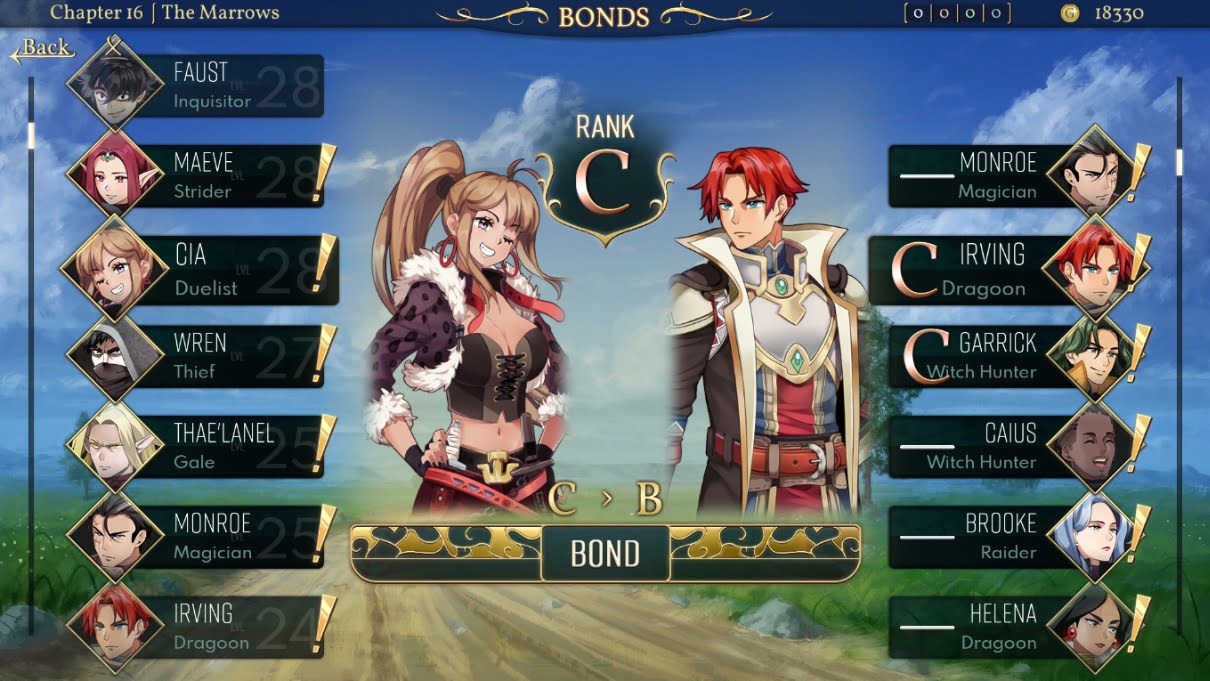
Managing Your Army
In Dark Deity, the player controls a set of units and must complete various objectives which almost always consists of combat against enemy units. Routing the enemy squad is a common objective–other objectives include defending for a certain amount of turns, capturing an objective point, escaping, or in one chapter, preventing enemies from destroying an aqueduct.
Managing your characters’ levels and growth is key to your team’s success in Dark Deity. Player units gain experience for engaging with enemies, and upon leveling up have a chance to level stats which have different effects on combat calculations. Units can also gain experience by using class-unique skills, allowing members of your team to increase their levels outside of direct combat.
Classes are a strong point of Dark Deity–each unit is assigned to a given class tree: warrior, mage, cleric, among others. Each tree has four options at tier 2, accessed upon reaching level 10 with a character, and an additional four at tier 3, accessed upon reaching level 30. Each tier 2 and tier 3 classes have two unique skills, which stack with each character’s innate skill. This makes for five unique skills that each character can have at tier 3 promotion. Players can mix and match tier 2 and tier 3 class combinations, which allows players to create units with different strengths–raw power, or movement utility, for example.
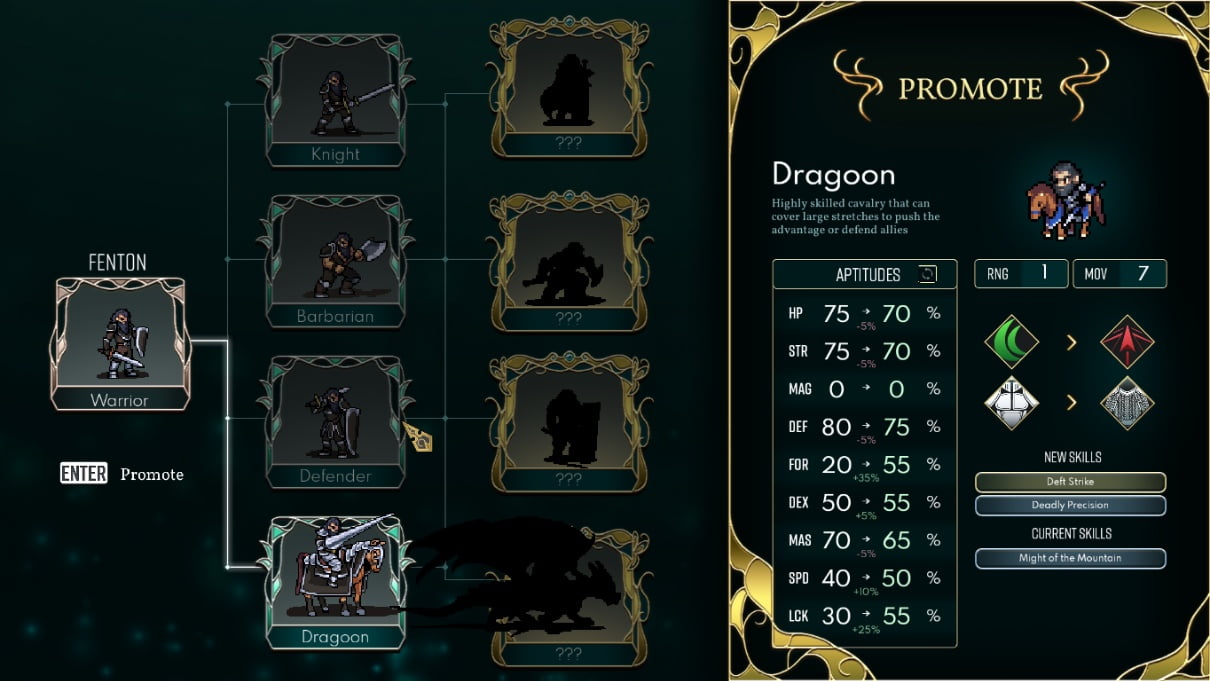
Another point unique to Dark Deity is its weapon and armor system. Weapons do not have durability and are locked to each character. The game provides all player characters with four weapon types, each upgradable and with a different stat they excel in. For example, if you have a character that hits hard, but is plagued with low accuracy, you could upgrade their Focus weapon to compensate. Enemy characters, for the most part, have access to only one weapon type at a time. These weapon types allow for flexibility for your characters in combat, and for enemy units, an additional layer of complexity to navigate in battle.
Dark Deity’s armor system is a bit more arcane–each class set is assigned one of four armor types. In combat, a damage modifier is applied to each type, increasing or decreasing the damage a unit takes dependent on the attacker’s weapon style. I went through most of the game without paying a huge amount of attention to this. This is a lot of information to remember and check when you’re going into combat hundreds of times in one game session.
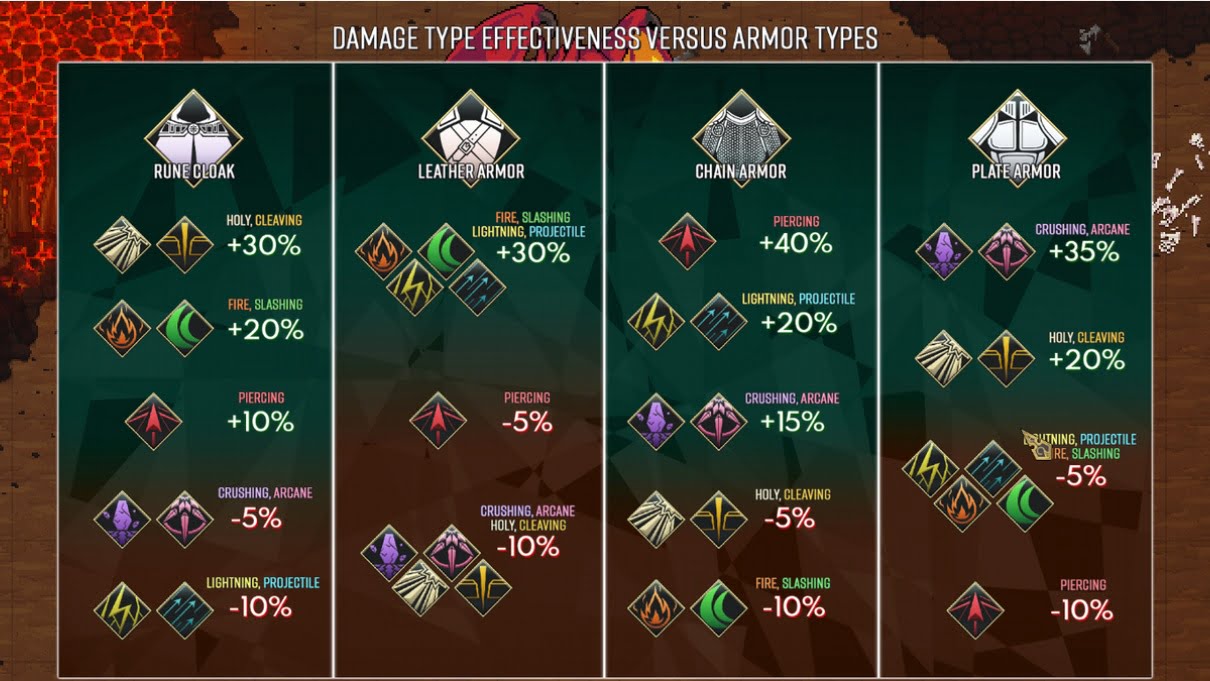
There is no permadeath in Dark Deity. When a player unit is defeated, they receive a 10% decrease in a single stat depending on the type of damage that defeated them. I reset a few times after losing a key stat, but powered through other times when I figured a character could handle the stat loss. For folks who may not want to spend time replaying a map they’ve mostly completed, it’s a welcome feature.
Good, if not Great Presentation
As mentioned earlier, the game features a basic ADV Visual Novel presentation style, with some world map exposition between chapters. The character sprites are of good, if not great quality, and one of the high points of the game for me was its throwback Gameboy Advance era sprite work and animation. I loved watching the animations, for the most part, as I went through the game.
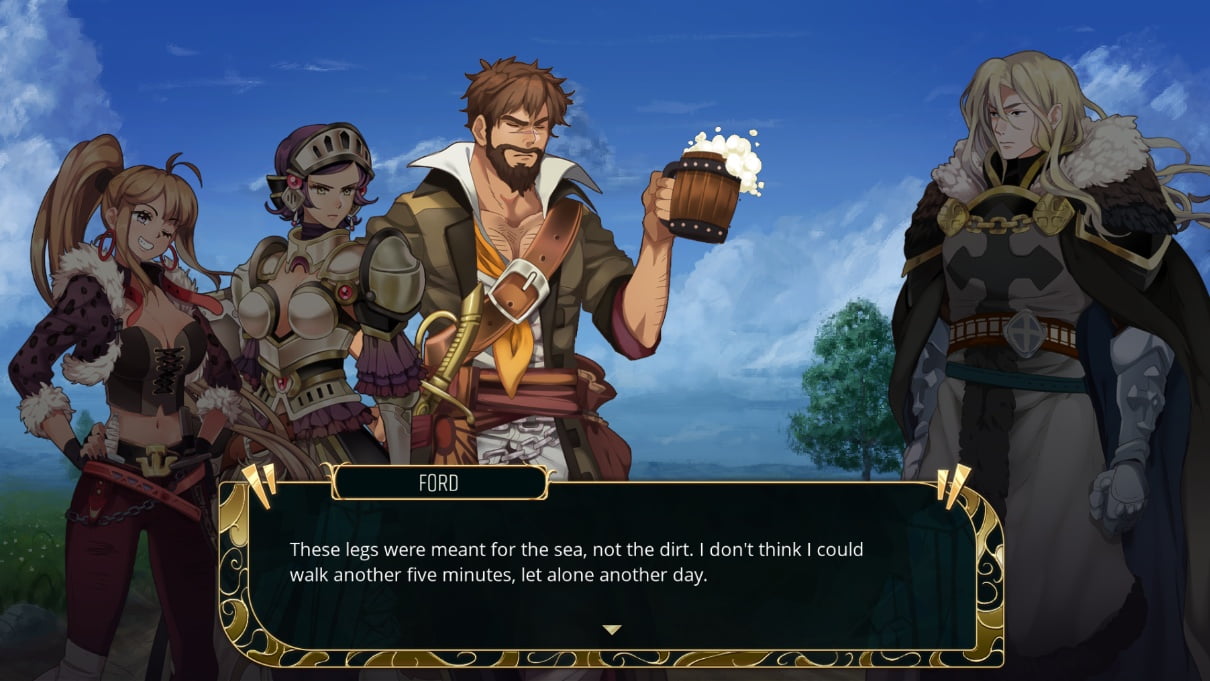
Certain animations, especially some magic spells, felt like they took entirely too long to complete. Thankfully, there is a skip button available so players can skip through combat when it starts feeling sluggish. There is an option to disable animations entirely. However, this function lacks a map animation denoting combat, leaving only experience gain and HP bar changes as the only evidence of combat resolution.
Each playable character in the cast, and certain NPC units, have voice lines that play upon combat and level up, in addition to some shortened quips that are used for dialogue. Your mileage may vary, but I found the voice lines in-game to be welcome and technically sound.
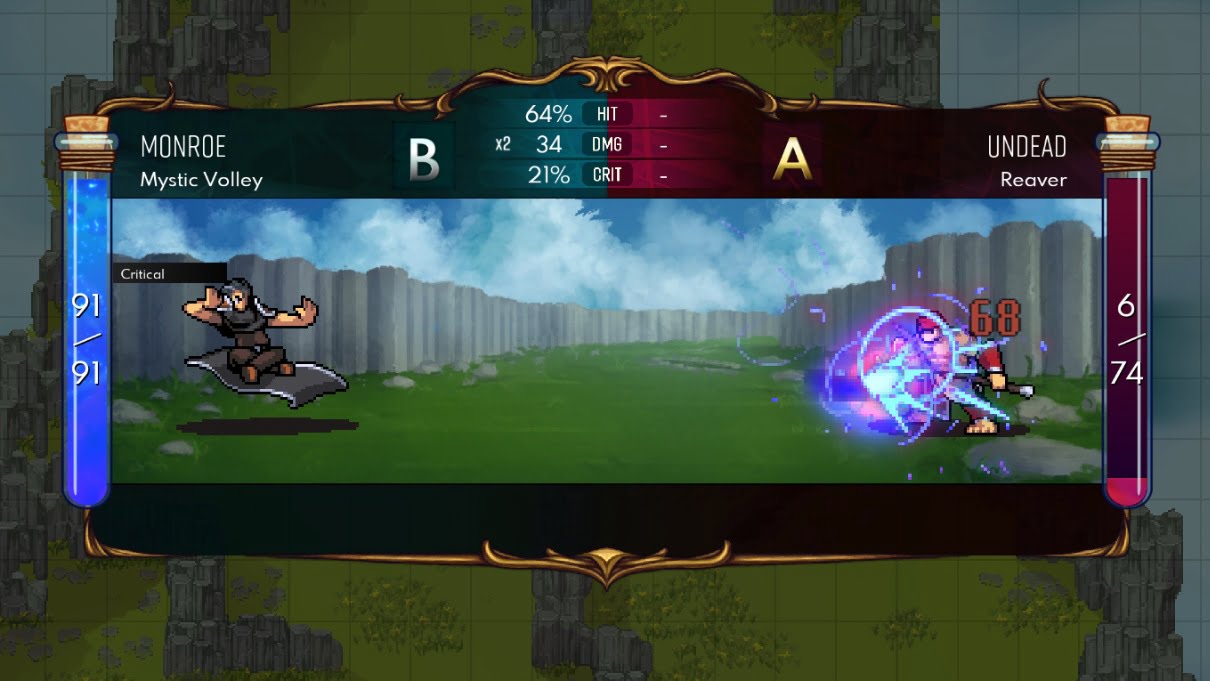
Lacking Control Options
On the other hand, one of the low points of Dark Deity is its lack of control options. If you are using a gamepad, you can remap controls through Steam’s Controller Layout function. If you are using a mouse and keyboard, well, you have to use both the mouse and keyboard. You are unable to customize keybinds at all, and the mouse is the only control option available for unit movement.
One example of the odd keyboard controls is that to confirm combat, the only option shown on screen is the Enter button. You can use either Q+E or the arrow keys to switch between weapon styles, but only Enter to confirm combat. If you are using WASD for map movement, and Q+E to switch weapons, you must lift your keyboard hand to confirm combat. If you use the arrow keys, you likely will have your hand over the arrows, Enter, and Right Shift buttons at the same time. This felt weird enough to me that I dug out an old gamepad to use for the majority of my initial campaign.
Or, at least I thought I was required to do it that way. On a second run-through of the game, I attempted to use mouse and keyboard controls again and found that left clicking on an enemy target’s square could confirm combat, and a right click could back out of almost any screen. The game only ever lists the primary option on the screen, however, and has no listing of alternate control mappings anywhere in-game, or even on the Steam community forums at the time of this article’s release.
Another thing to note regarding Dark Deity’s UI is its loading screens, which it uses to transition between combat and story. These screens lasted me anywhere from 15 seconds to about over a minute. Not too big of a deal, but it felt odd for the style of the game.
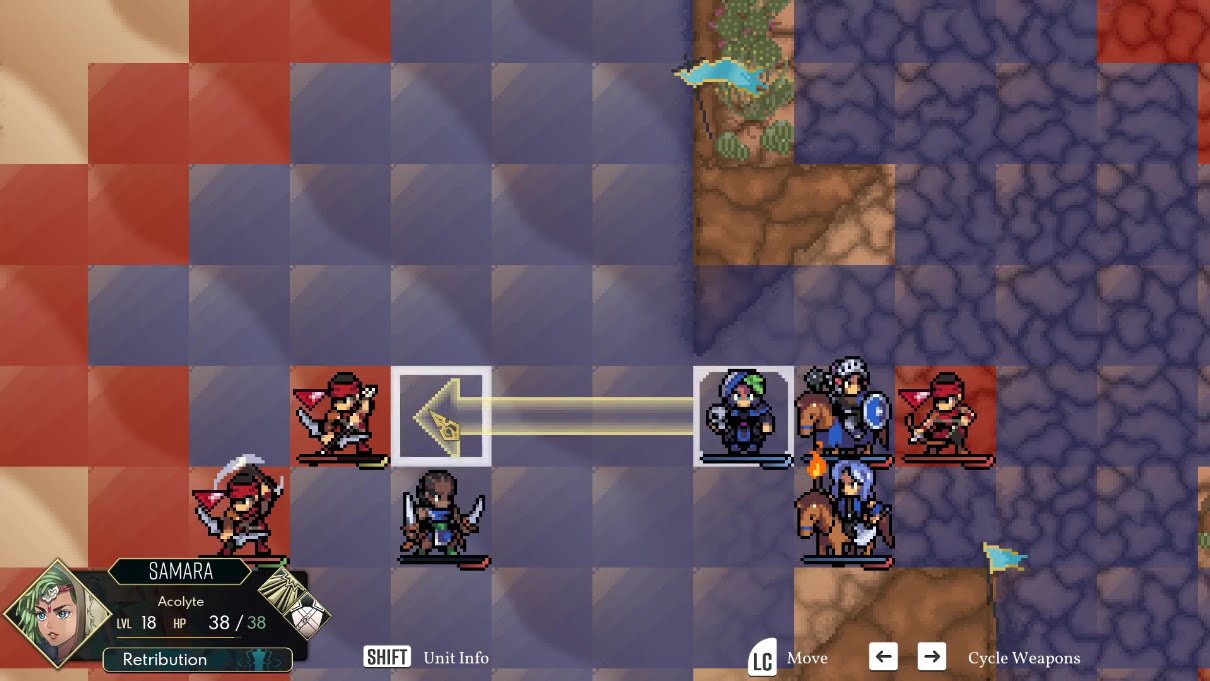
Gameplay Slogs
One of the things that will stay with me after my experience with Dark Deity is the yo-yo effect that both the gameplay and story pulled on me.
Starting with gameplay, the game starts fairly challenging and complex. But as the game goes on, some levels start to feel like stat checks, rather than tactical exercises. Certain enemies can reach incredibly high dodge numbers–for example, in Chapter 7, there are multiple units with 150+ dodge stat. Most of my army had less than a 50% chance to hit these units, even using their most accurate weapons. You’re not required to defeat these enemies to complete the chapter, which is certainly an intended design decision. However, they served as frustrating RNG roadblocks for most of my units, save one.
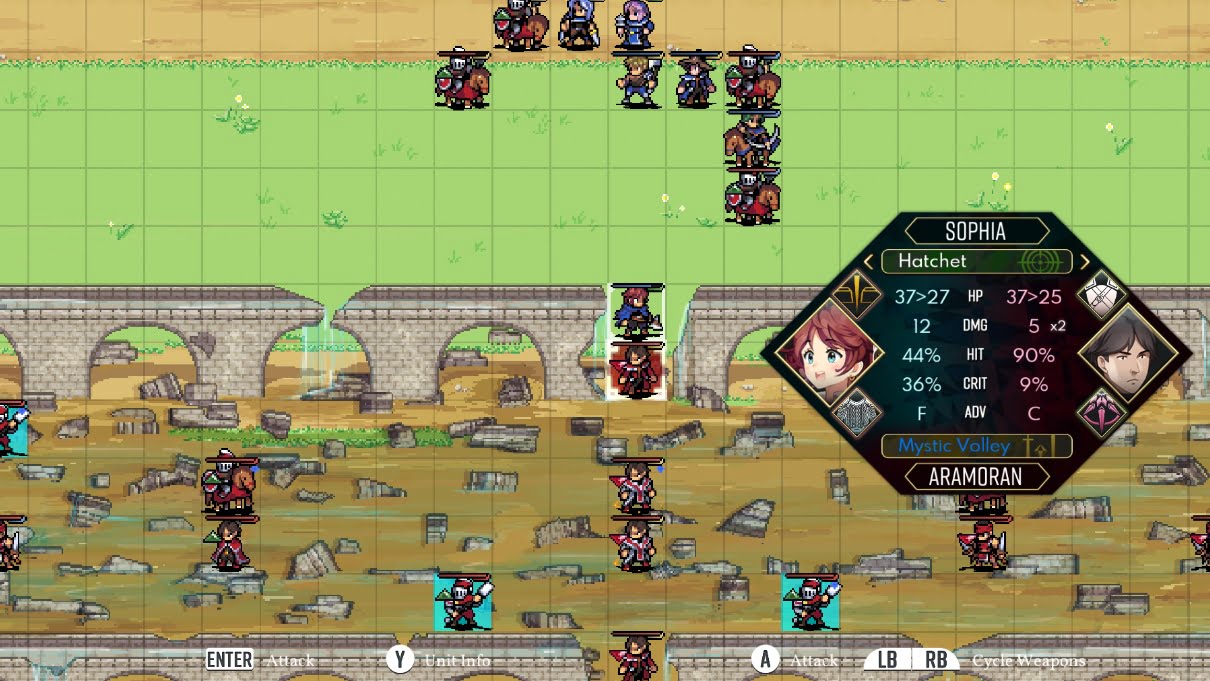
That character who broke the game for me was Cia. A rogue available early in the game, Cia quickly became my crutch character. Where other characters had inconsistent damage or paper-thin defenses, Cia was my personal one-man-army. The class I had chosen for her increased her dodge while she operated solo, so that’s what I decided to do. I would send most of my team one way, and Cia the other. I would literally have 9 units struggling on one side of a map, while Cia cleared the other side by herself, hardly breaking a sweat.
Later on, upon receiving her class 3 promotion, she gained a skill that gave her 40% HP restoration upon scoring a critical hit. She had above 40% crit chance on most enemies at that point, so with her dodge stats, damage, and healing, I soloed the second to last chapter with her. It was easier to just deploy Cia alone, instead of having to worry about the rest of my team.
And it wasn’t the case that I was funneling resources into Cia alone. Most of my units were only two to three levels behind Cia. Despite that, their damage or defenses were comparatively lacking. One of my other units, Rose, took 90% of her HP in damage in a single hit from an enemy archer. I didn’t use Rose much after that.
However, that’s not to say that Cia will be 100% overpowered every run any player has. Due to variations in level-ups, any character could be excellent in Dark Deity. However, regardless of stat increases, certain classes and skill combinations in the game are simply overpowered. Cia just happened to be the earliest available character that I could take advantage of.
Lastly, the map design also left much to be desired at times. Some levels are total slogs, with incredible amounts of enemies to defeat. For example, one chapter is on a boat that is about 50 squares from top to bottom. To compare, the aqueduct map mentioned earlier is only 26 squares tall but has multiple paths where you’re able to stage your army’s attack. Unlike that map, the boat map is a one-way rout the enemy slog. There was only one way to move your units, with no side objectives to split your party. However, certain maps do have genuinely clever objectives and gimmicks, like a raid boss enemy, among others. These do well in breaking up the monotony of other chapters inundated with routing combat.
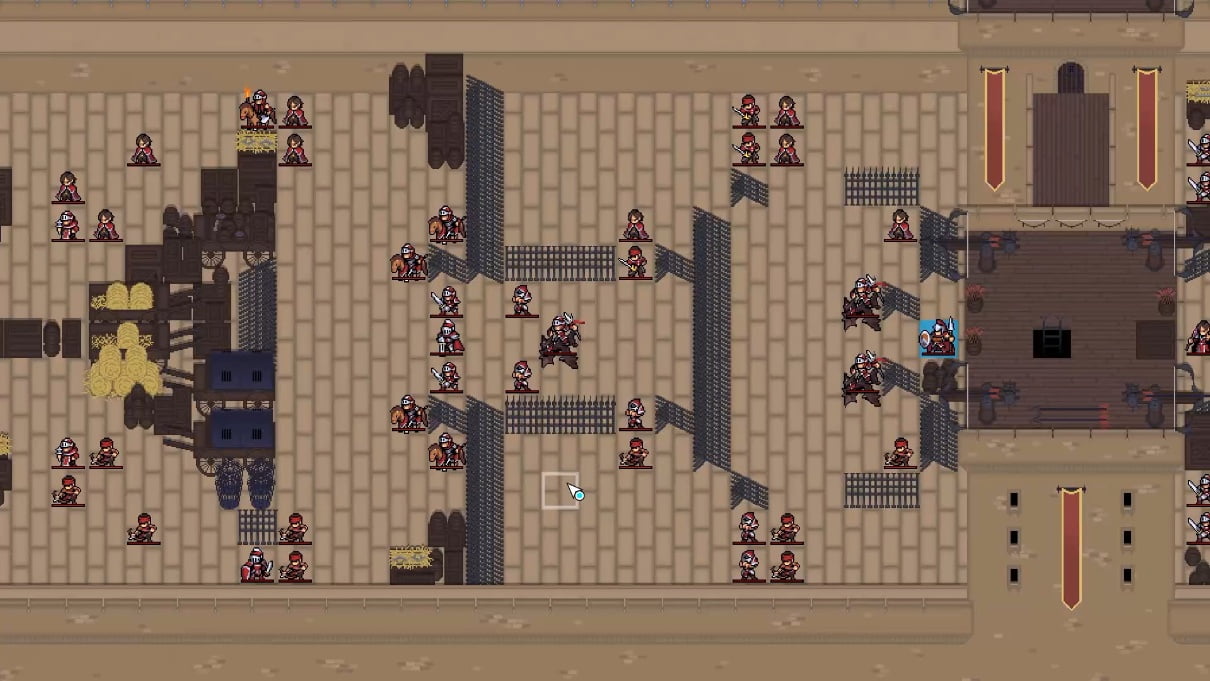
A Story Too Wide and Lacking Depth
The story left me scratching my head in confusion more often than not. First off, the cast is too large. Not necessarily for gameplay reasons, but for what they were trying to do with the story. There are 30 playable characters, and it seems like the developers tried to have every single one of them involved. This resulted in characters chiming in at odd or unwelcome times. It was jarring to have a serious conversation going, only to have Ford, our resident drunkard sailor pop in for a quip with his eternally full pint! It seemed as if the writers had a checklist as if they were saying ‘Okay, we had Ford in chapter 13, chapter 17, and 23–check. Ah, Benji’s only in two chapters–let’s add in a line for him here!’
As for the main character, Irving feels poorly written considering he’s the lead and serves as a microcosm of the game’s writing issues. Early on, he’s prominent–but then he fades away into the background as the writers introduce more characters into the fray and introduce them to the player. For the most part, it feels like other characters move the story forward, and Irving is just along for the ride.
Towards the midpoint of the game, Irving is once again put into the forefront as the leader of the army and is chosen by the party to represent them at a critical junction. Many in the team quip that Irving is their leader and that he’s the only one they’d trust with the task. At this point, I was plain confused. Irving, so far at that point, showed precious few leadership qualities. He generally did not move the team forward. Other members of the party did. There was no point before this event where I could remember him making a unilateral, decisive choice. Instead of showing us why Irving deserves the party’s trust, it felt like the game was trying to tell me: “Irving is a great leader.” That message fell flat.
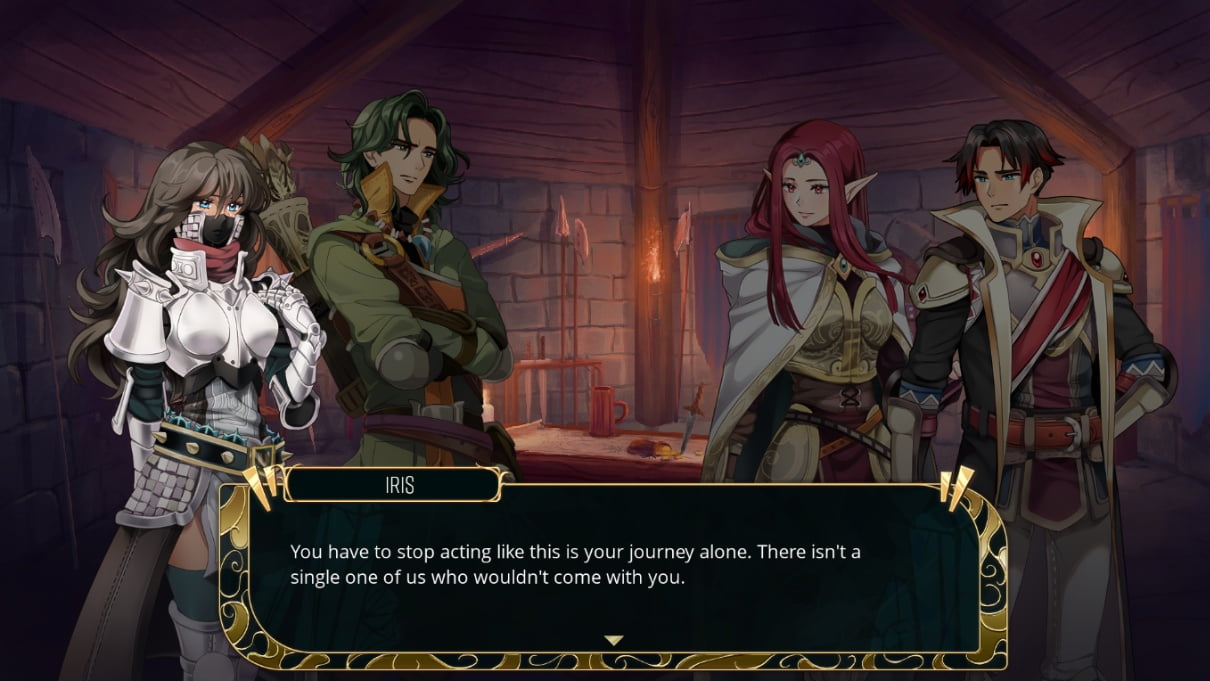
Another issue I had with the story was its sheer number of loose ends. Some NPCs are explored, and primed for development, only to never appear again in the story. Some moments seem like they were meant to be emotional, but fall flat because there was too little time developing the characters and their relationships. The amount of substories and plots that seem half-baked and unfinished is simply too high for a game like this. I wanted more time to develop the motivations of the antagonists in the game, but there just weren’t enough scenes exploring them.
All that criticism to say, I didn’t entirely hate the story. I liked the characterization of Benji, a fun goof of a character. There was an intriguing storyline explored with Sloane, a mage and member of a Delian noble family. But throughout my playthrough, I was left with question marks floating above my head, wondering why certain characters were in certain scenes, and when certain characters might come back into the story–when they often never did, or to the level I expected.
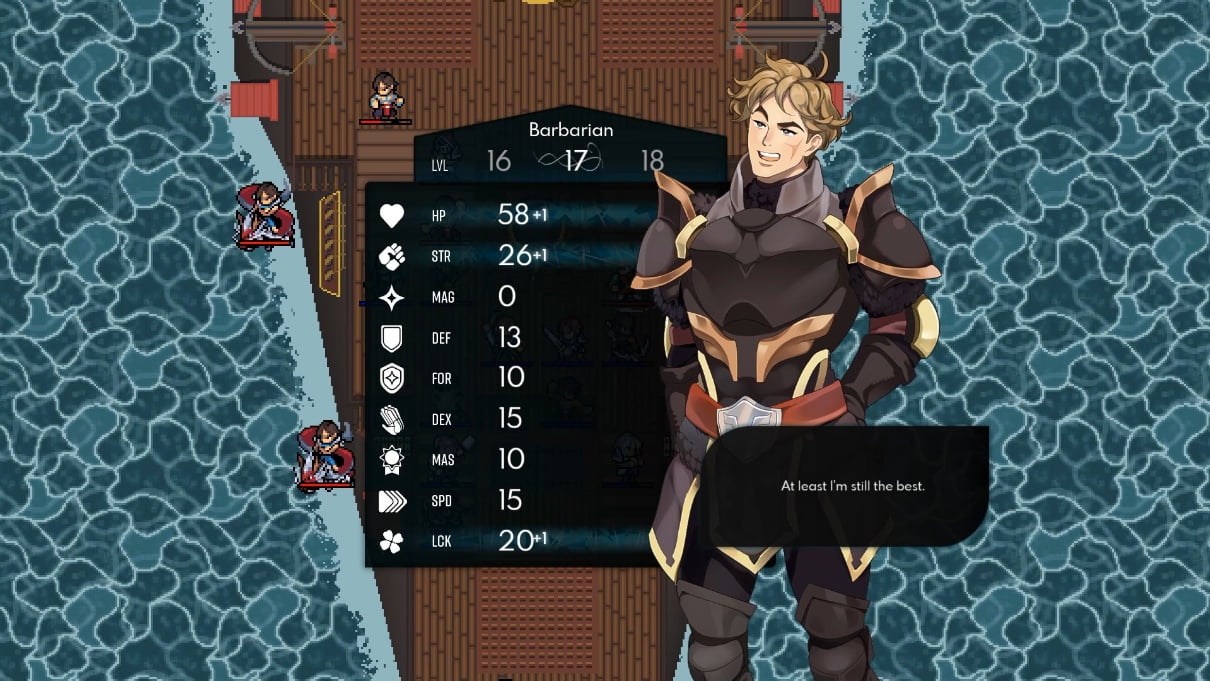
Verdict
Dark Deity is a flawed game. Its story left me wanting more, and certain game balancing issues decreased my enjoyment at times. However, despite its faults, Dark Deity scratches an itch with its quality base gameplay and unique features that any SRPG enjoyer would be remiss to overlook. In addition, its quality visual-novel style portraits and pixel art are undoubtedly boons for the title. I rate Dark Deity a 7, with the caveat that for folks who aren’t into or haven’t tried SRPGs to do more research before buying. But, if you find yourself in love with the art style, are intrigued by a preview video, or are itching for a Fire Emblem-like experience outside of Nintendo, it’s absolutely worth a try, and a commendable first offering from Sword & Axe.
DARK DEITY IS RECOMMENDED

Want to see some SRPGs? How about checking out Utawarerumono: Prelude To The Fallen, a highly recommended SRPG/Visual Novel. Or maybe one of the Fire Emblem titles?
Many thanks go to the wallet of the writer for providing a PC copy of this title. This review was not written using a review code.
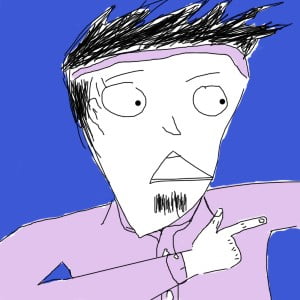
An aca-fan who leans more into fan than academic, Pieman likes to read, game, and enjoy VTubers leisurely with a beer in hand. He’s also an unabashed isekai enjoyer who’s always on the lookout for the newest world. Catch his sporadic tweets, Twitch streams, and endless stream of VTuber-related likes on @Piemanmj

